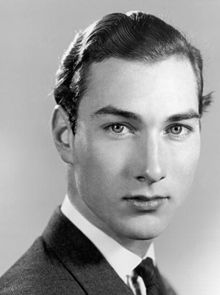Prince William of Gloucester (1941-1972)
Prince William of Gloucester, William Henry Andrew Frederick was a grandson of King George V of the United Kingdom.
He probably never heard of Grantham, never mind visited. Neither did he join the military as expected in his position.
Yet the local barracks on Somerby Hill was named after him.
Prince William was born at Hadley Common, Hertfordshire, the son of Prince Henry, Duke of Gloucester who in turn was the third eldest son of King George V and Queen Mary.
His mother was Princess Alice, Duchess of Gloucester, the third daughter of the 7th Duke of Buccleuch.
As a grandson of the British monarch in the male line, he was styled Prince of the United Kingdom of Great Britain and Northern Ireland with the style His Royal Highness.
He spent his early childhood at Barnwell Manor in Northamptonshire and later in Australia, where his father served as Governor-General from 1945 to 1947.
Educated at Wellesley House School, a prep school at Broadstairs in Kent, he went on to Eton, from where he went to Magdalene College, Cambridge, to read history, graduating with a BA degree in 1963, subsequently raised to an MA (Cantab.) degree in 1968.
After Cambridge, he spent a post-baccalaureate year at Stanford University, studying political science, American history, and business.
After returning to Britain, he took a position with Lazards, a merchant bank.
Prince William was the second member of the British Royal Family to work in the civil service or the diplomatic service (the first was his uncle, Prince George, Duke of Kent, in the 1920s). He joined the Commonwealth Office in 1965 and was posted to Lagos as the third secretary at the British High Commission. In 1968, he transferred to Tokyo to accept the post of second secretary (commercial) in the British Embassy.
In 1970, the health of his father, the Duke of Gloucester, was beginning to fail and Prince William was diagnosed as suffering from porphyria. Prince William resigned from the diplomatic service and returned to Britain. For the next two years, he managed Barnwell Manor and began to carry out public duties as a member of the royal family.
William had a long-standing relationship with Zsuzsi Starkloff and wanted to marry her; however, she claimed that because she was twice divorced with two small children, William’s family refused to acknowledge or accept their relationship. She also says she was met with displeasure from courtiers, because she was Jewish and Hungarian.
According to her, William continued to see her until his accidental death in 1972.
A licensed pilot, Prince William owned several aircraft and competed in amateur air show races. In August 1972, he was competing in the Goodyear International Air Trophy at Halfpenny Green, near Wolverhampton, with Vyrell Mitchell—a pilot with whom the prince had often raced—listed as a passenger.
Shortly after their low-level take-off, the Piper Cherokee banked abruptly to port, with an extreme increase in the rate of turn and corresponding loss of altitude; the wing hit a tree and sheared off and the out-of-control plane flipped over and crashed into an earthen bank, bursting into flames. Prince William and Mitchell were killed.
Prince William was buried in the Royal Burial Ground, Frogmore. The comprehensive school in Oundle, which he opened in 1971, was renamed Prince William School in his memory.
The Prince of Wales named his first son, Prince William, born in 1982, after him.
The barracks at Grantham was established on the site of the former RAF Spitalgate in October 1976, as the Central Volunteer Headquarters for the Royal Corps of Transport.
The barracks were formally named after Prince William of Gloucester at a ceremony held in March 1977 led by Princess Alice, Duchess of Gloucester.




Leave a Reply
You must be logged in to post a comment.